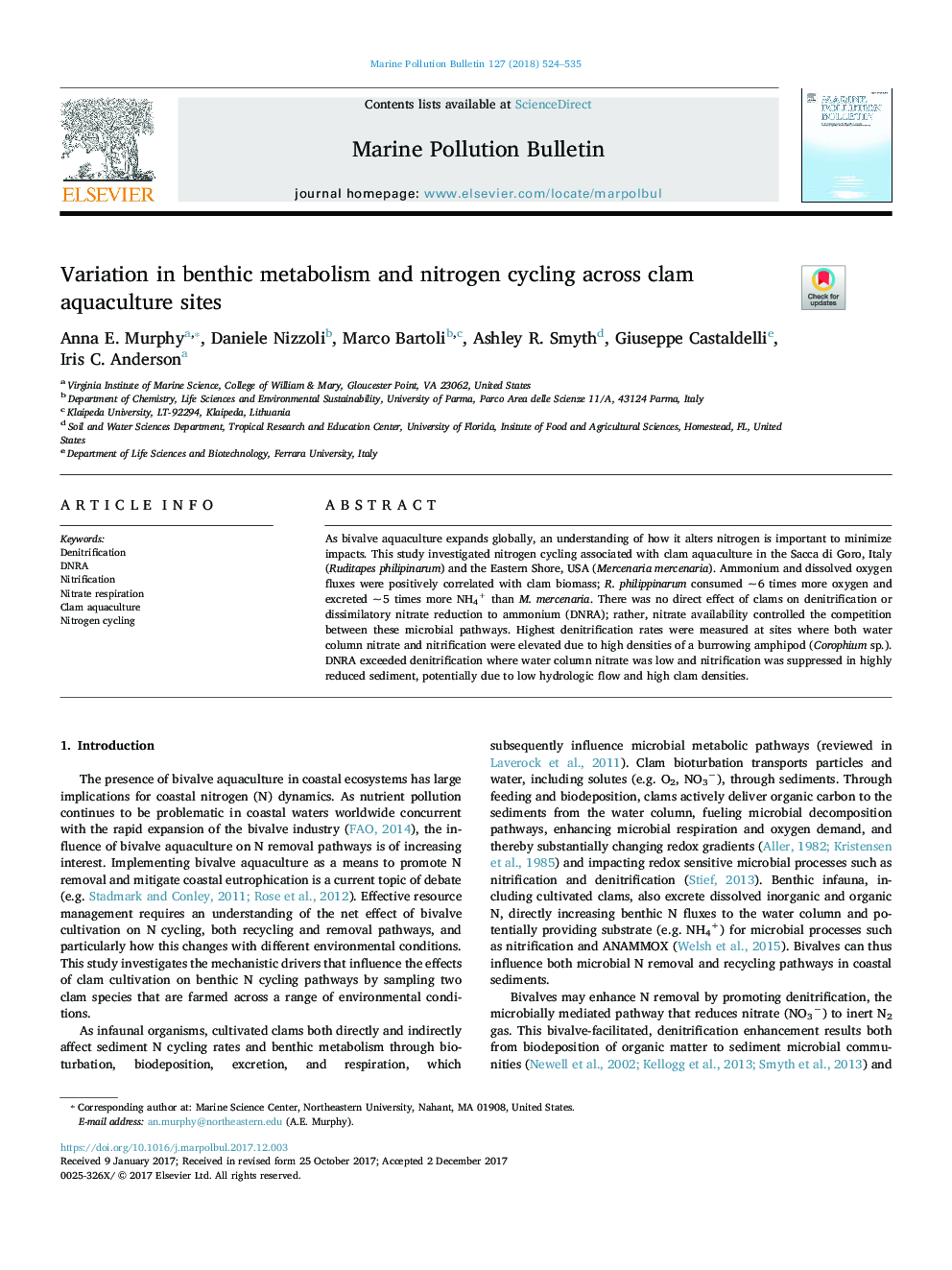| Article ID | Journal | Published Year | Pages | File Type |
|---|---|---|---|---|
| 8871694 | Marine Pollution Bulletin | 2018 | 12 Pages |
Abstract
As bivalve aquaculture expands globally, an understanding of how it alters nitrogen is important to minimize impacts. This study investigated nitrogen cycling associated with clam aquaculture in the Sacca di Goro, Italy (Ruditapes philipinarum) and the Eastern Shore, USA (Mercenaria mercenaria). Ammonium and dissolved oxygen fluxes were positively correlated with clam biomass; R. philippinarum consumed ~Â 6 times more oxygen and excreted ~Â 5 times more NH4+ than M. mercenaria. There was no direct effect of clams on denitrification or dissimilatory nitrate reduction to ammonium (DNRA); rather, nitrate availability controlled the competition between these microbial pathways. Highest denitrification rates were measured at sites where both water column nitrate and nitrification were elevated due to high densities of a burrowing amphipod (Corophium sp.). DNRA exceeded denitrification where water column nitrate was low and nitrification was suppressed in highly reduced sediment, potentially due to low hydrologic flow and high clam densities.
Related Topics
Physical Sciences and Engineering
Earth and Planetary Sciences
Oceanography
Authors
Anna E. Murphy, Daniele Nizzoli, Marco Bartoli, Ashley R. Smyth, Giuseppe Castaldelli, Iris C. Anderson,
